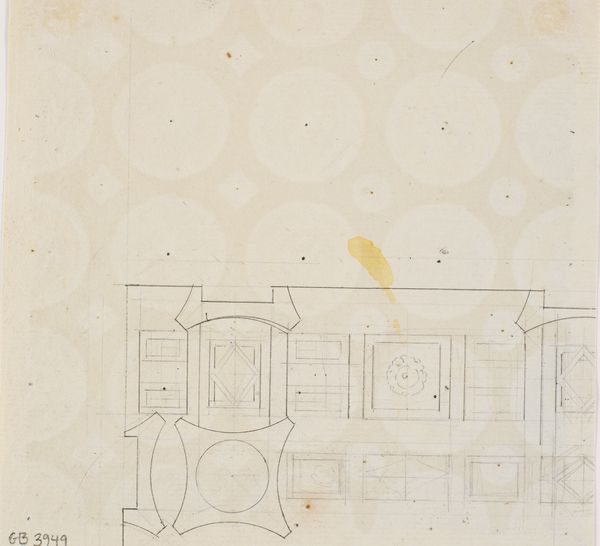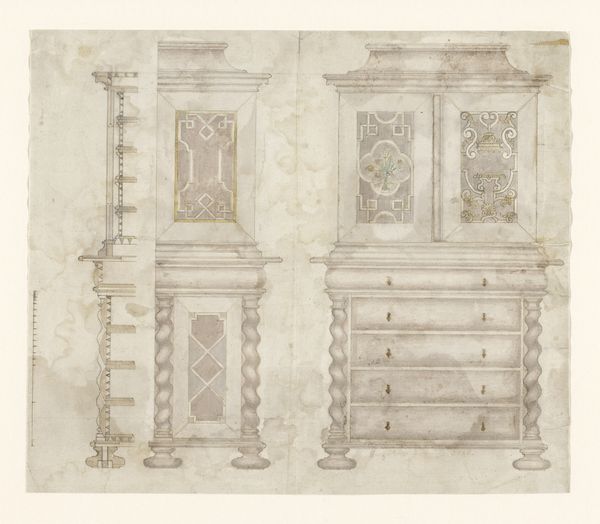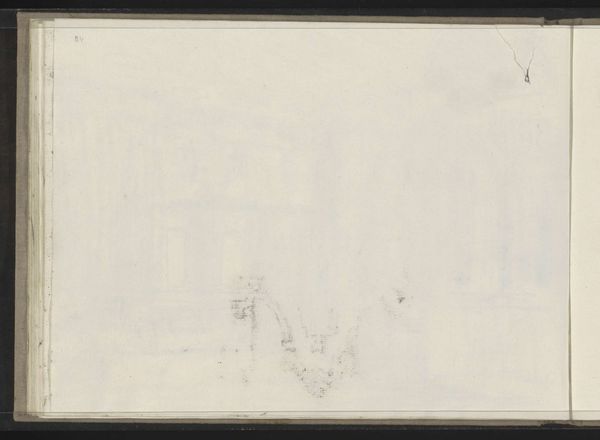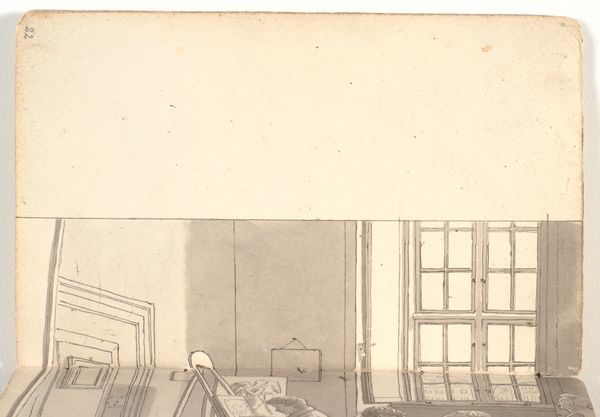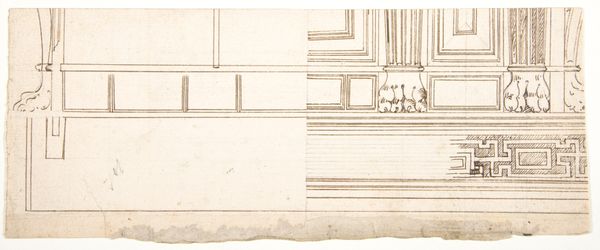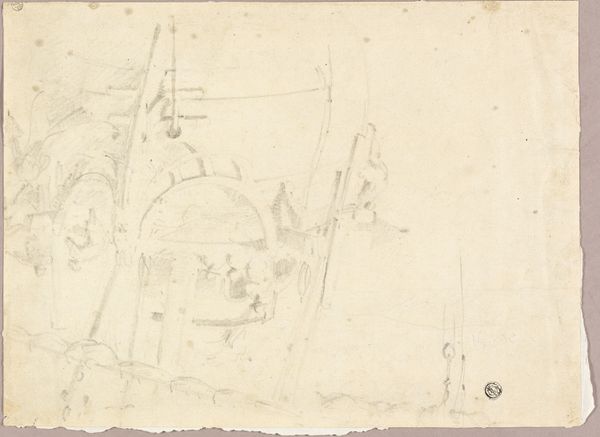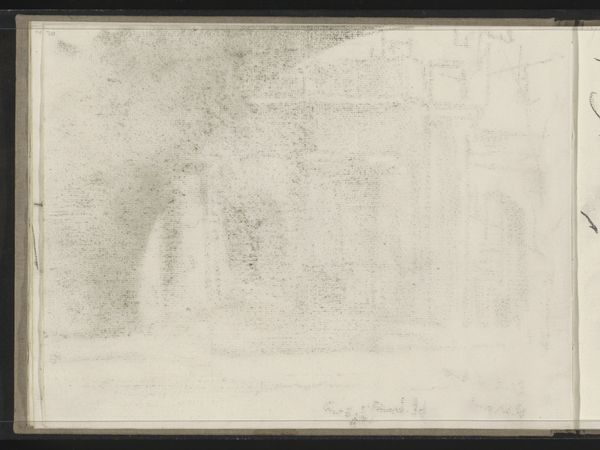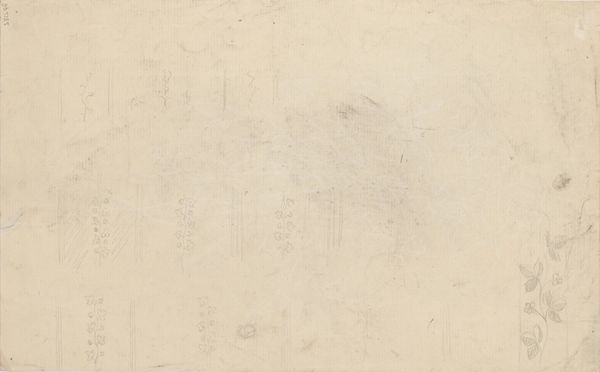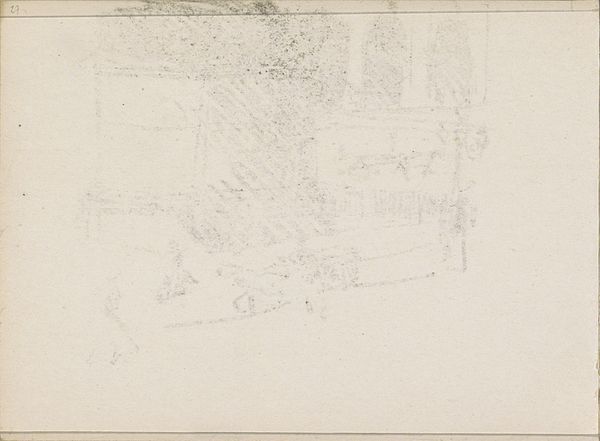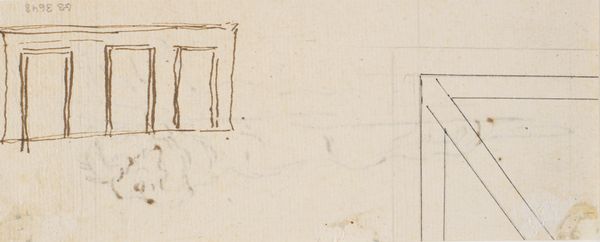
drawing, paper, pencil
#
drawing
#
landscape
#
figuration
#
paper
#
romanticism
#
pencil
#
line
#
watercolor
#
realism
Dimensions: 131 mm (height) x 205 mm (width) (bladmaal)
Editor: Here we have Wilhelm Marstrand's "Snoet slange," a pencil drawing on paper from 1837, housed at the SMK. It’s incredibly faint; it feels like a ghostly impression. The subject is a structure that could be a mausoleum and a snake-like sculptural element. What stands out to you? Curator: The materiality here is crucial. It's pencil on paper, seemingly a preliminary sketch. We need to think about the *making* of this drawing, not just the *image*. The visible, almost crude, execution tells us much more about the Romantic ideal as a *process*, a physical creation tied to labor. Was it a commission or personal study? What implications does the status have in regards to Romantic ideals? Editor: So, the physical act of creating is as important as the final representation? It almost seems like the subject is subservient to the material choices. Curator: Precisely. Marstrand isn’t just depicting something; he’s engaged in a process, influenced by available and affordable materials – pencil and paper versus a costly oil painting. The context of the 1830s in Denmark, a time of reconstruction, comes into play here. Think about where this sketch fits in terms of commodity production and social access to materials and means of visual representation. Editor: That makes me think about how sketches like this might have circulated. Were they valued as standalone artworks or simply as stepping stones to larger paintings? Curator: That's a key point! Consider how drawings challenge the traditional hierarchy between ‘high art’ and preparatory craft. Did the market value the “idea” as much as the finished product? Looking closer, notice the hasty marks, the corrections… these indicate the conditions of its production – decisions about access and artistic process which we would not encounter in the smoothly finished surface of an academic painting. Editor: I see what you mean. Focusing on the process makes me reconsider the entire piece. Thanks for shedding a different light! Curator: Indeed! It compels us to challenge these aesthetic choices not in terms of their pure design, but the labor, material conditions, and networks of artistic exchange that underpin it.
Comments
No comments
Be the first to comment and join the conversation on the ultimate creative platform.
